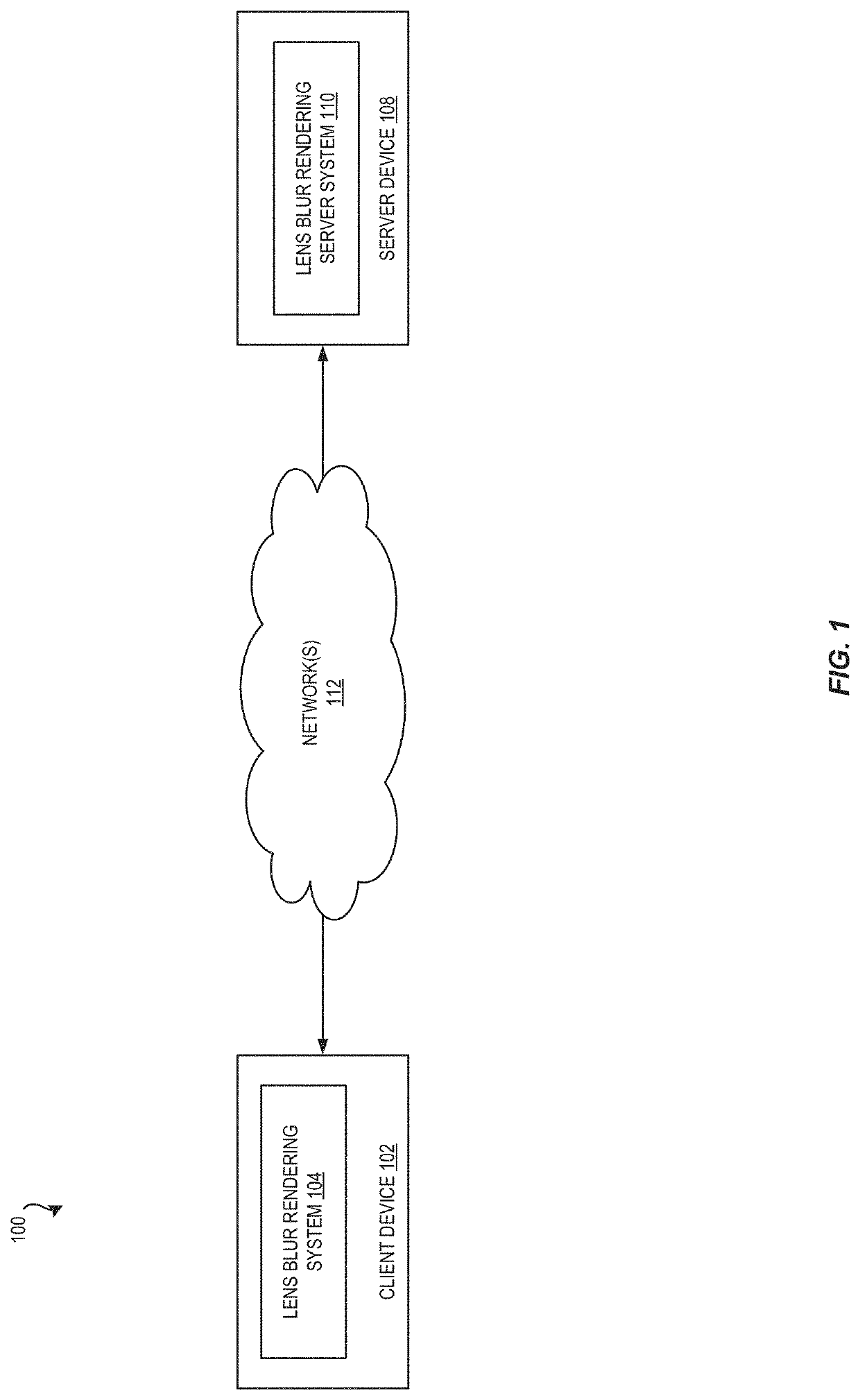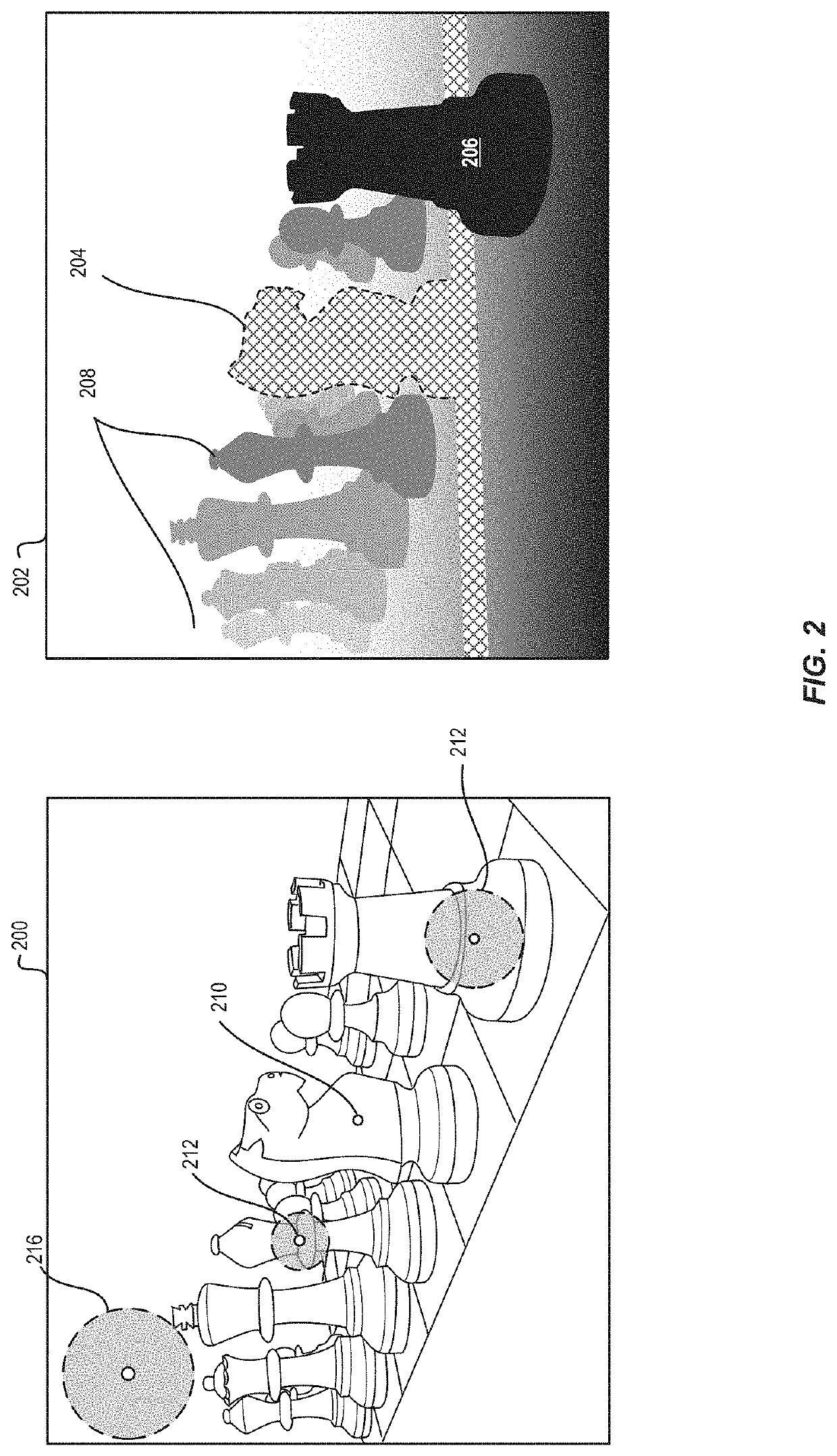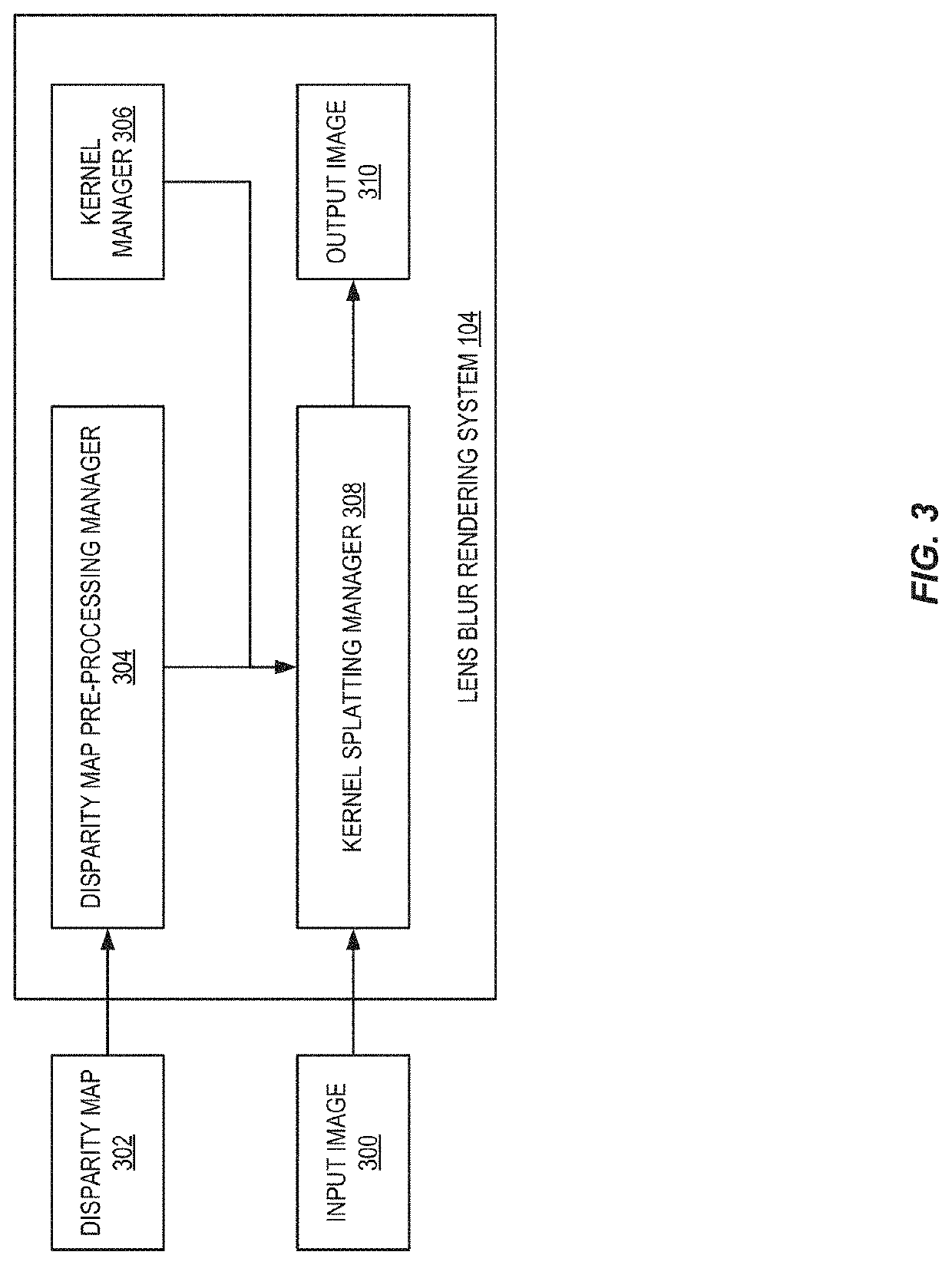Kernel reshaping-powered splatting-based efficient image space lens blur
a kernel reshaping and kernel reshaping technology, applied in image enhancement, image analysis, instruments, etc., can solve the problems of reducing the complexity of the image, and reducing the realism of the lens blur effect, so as to reduce the complexity and eliminate the effect of color bleed artifacts from the resulting blur effect, and efficient blur kernel reshaping
- Summary
- Abstract
- Description
- Claims
- Application Information
AI Technical Summary
Benefits of technology
Problems solved by technology
Method used
Image
Examples
Embodiment Construction
[0021]A lens blur effect is applied to an all-in-focus image to make the image appear as though it were taken with a large aperture camera (e.g., to simulate a shallow depth of field). This results in some regions of the image being blurred and some regions remaining in focus, depending on the chosen focal depth. Such lens blur effects often result in a number of visual artifacts, such as color bleeding and hard transitions around blurred object boundaries, resulting in an unrealistic appearance. Traditional lens blur systems have used a variety of ray handling techniques to attempt to correct for these artifacts. For example, some systems perform direct kernel convolution on each depth layer from farthest to nearest. This addresses color bleeding, as the closer layers overwrite the farther layers, but still results in hard transitions around now-blurred objects. Additionally, the complexity of such algorithms is increased by the number of depth layers to be processed.
[0022]Other tr...
PUM
 Login to View More
Login to View More Abstract
Description
Claims
Application Information
 Login to View More
Login to View More - R&D
- Intellectual Property
- Life Sciences
- Materials
- Tech Scout
- Unparalleled Data Quality
- Higher Quality Content
- 60% Fewer Hallucinations
Browse by: Latest US Patents, China's latest patents, Technical Efficacy Thesaurus, Application Domain, Technology Topic, Popular Technical Reports.
© 2025 PatSnap. All rights reserved.Legal|Privacy policy|Modern Slavery Act Transparency Statement|Sitemap|About US| Contact US: help@patsnap.com



